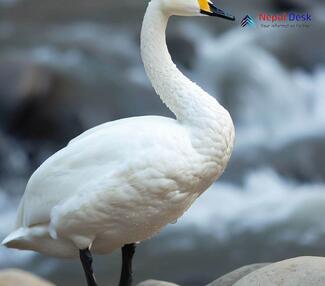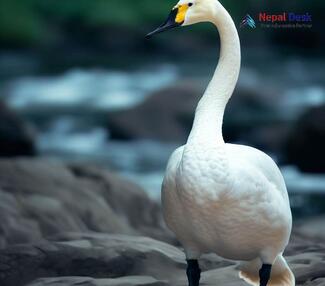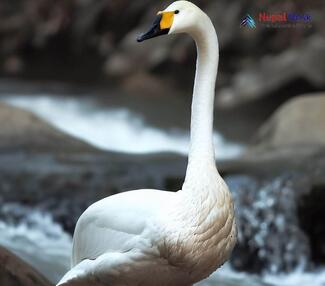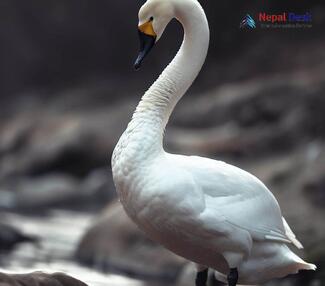From their awe-inspiring taxonomy and physical features to their unique habitat and diet, the Whooper Swan is a bird that never ceases to amaze. As you delve into the world of these magnificent creatures – particularly their breeding, nesting patterns, and presence in Nepal – you will undoubtedly find yourself captivated by their elegance and charm.
Taxonomy and Physical Features
The Whooper Swan (Cygnus cygnus) belongs to the family Anatidae and is classified as one of the six swan species. It is known for its distinctive black and yellow beak, with a prominent yellow wedge at the base extending towards the tip. Adult swans can grow up to 140-160 cm in length, with an impressive wingspan of 205-235 cm. Their body is covered in pure white feathers, while their legs and feet are black. These physical features not only make Whooper Swans graceful but also an unmistakable sight in the wild.
Habitat and Diet
Inhabiting a wide range of wetland environments, from freshwater lakes to rivers or even flooded fields, Whooper Swans have a diverse habitat spanning Europe and Asia during the breeding season. They migrate southwards during winters, seeking out milder climates like those in Japan, China, or even parts of Europe.
Their diet mainly consists of aquatic vegetation – such as pondweed or water milfoil – obtained by dipping their long necks into the water. They may also graze on grasses or indulge in small fish or invertebrates occasionally.
Breeding and Nesting
When it comes to breeding season (usually from April onwards), these monogamous swans establish nesting territories near water bodies. The mounds they create for nests consist of reeds and grasses lined with feathers plucked from their own bodies. Females typically lay 4-7 eggs, with incubation lasting for 29-34 days. During this period, it is the female's responsibility to keep the eggs warm while the male aggressively protects the area from potential intruders.
Parents remain with their offspring – called cygnets – for several months as they learn to feed and fly. It is a fascinating sight to watch swan families swimming together, forming a beautiful flotilla on tranquil waters.
Presence in Nepal
Whooper Swans are uncommon yet occasional winter visitors to Nepal. They have been spotted in wetlands such as Koshi Tappu Wildlife Reserve and Chitwan National Park. Bird watchers and enthusiasts flock to these regions with hopes of catching a glimpse of this elegant bird, a rare treat that leaves a lasting impression on anyone who encounters it.
In conclusion, the Whooper Swan proves itself to be an intriguing species in terms of its taxonomy, physical features, habitat, diet, breeding habits, and presence in Nepal. Exploring these various aspects helps us appreciate not only the remarkable world of swans but also their significance in the broader context of our natural environment.




